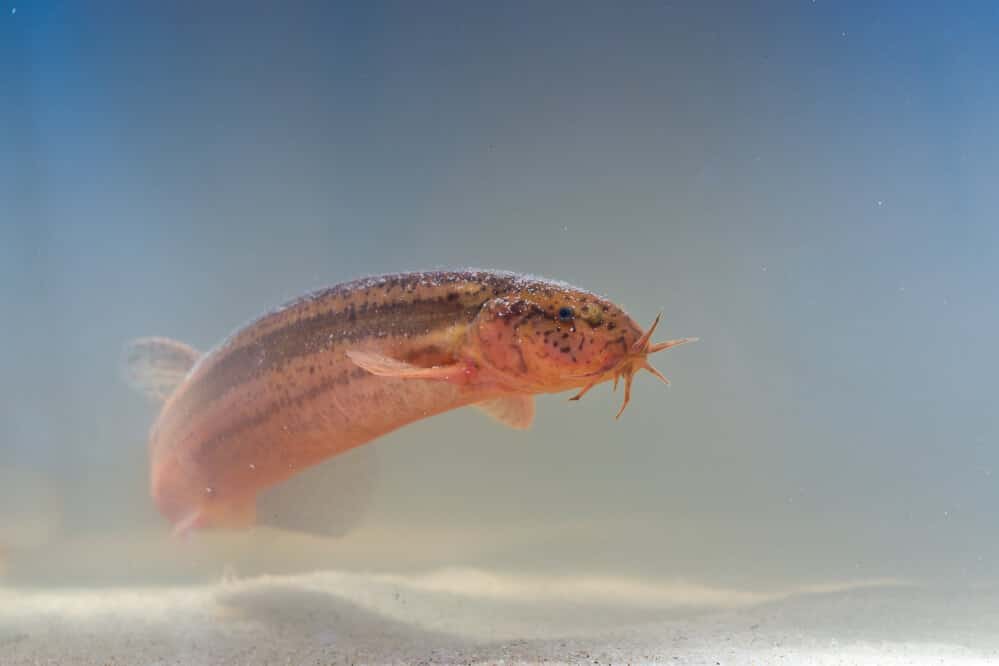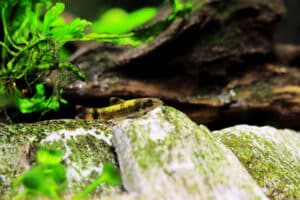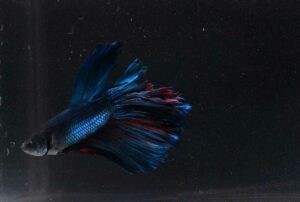Dojo Loaches are an interesting aquarium fish. They’re fun, playful and hugely adaptable to a wide range of water parameters. This makes them easy to care for and one of the best options for beginner aquarists.
But, when you first come into the hobby, there are many questions about Dojo Loaches and their temperament. And one such question is: Are Dojo Loaches Aggressive?
And the answer to that question is No, they are very peaceful and do their own thing at the bottom of the tank. However, they can get somewhat aggressive with smaller fish, especially when they’re hungry.
These characteristics make Dojo Loaches one of the most desirable fish to have in a community tank. Of course, there are exceptions to every rule, so you’ll have to keep an eye on them and how they interact with other species as well as with their own kind.
Even the most peaceful fish can engage in a conflict with another tank mate for no apparent reason. Keep reading till the end to learn more about the Dojo Loach’s behavior and temperament, as well as details about its tank mates.
The Dojo Loach Temperament

Dojo Loaches are East Asian natives and go by many names, such as Pond Loach or Weather Loach. But, regardless of the name, these are easy-going, peaceful fish that love minding their own business in the lower regions of the tank.
As with most bottom feeders, they’re quite skittish and prefer hiding when threatened.
The other awesome thing about Dojo Loaches is that they interact with and are aware of humans. Usually, fish only pay attention to people when it’s feeding time. But, this isn’t the case with Dojo Loaches.
They are notoriously friendly and aware of their keeper’s quality of care.
With some patience, tenacity and training, it’s possible to get them to eat out of your hand. In other instances, they’ll let you pet or touch them. Therefore, if you want to teach your fish to do tricks, then a Dojo Loach is worth a try.
Dojo Loach Tank Behavior
For the most part, Dojo Loaches will stay out in the open while swimming around, playing with other fish (usually their own kind) and are intensely social. However, this is only when they’re comfortable and their roommates don’t present a threat.
This is because, even though they are avid bottom feeders, they love to move around the tank. Dojo Loaches have a natural curiosity and spend much time discovering various areas within their living quarters. Consequently, they’re also opportunists and infamous escape artists, giving Houdini a run for his money.
Opportunistic Jumpers
Dojo Loaches are famous for finding any open nook or cranny and jumping out of it. So, it’s imperative that you have a tight fitting lid. If there are holes, they should be much smaller than the fish to prevent them from abandoning ship.
In the event you see one of these energetic aquarium hippies on the floor, don’t panic. Another fabulous feature about them is that they can take in atmospheric air and still survive without much damage to their system. So, the only thing you have to do is gradually and slowly reintroduce them into the tank.
Best Tank Mates for Dojo Loaches
Because of the Dojo Loach’s penchant for peace, they are suitable to live with a variety of fish. However, you should have them with their own kind in groups of three or more. This helps keep them calm and maintains their sense of serenity.
But, they often socialize with other amicable fish. They’ll playfully chase others and you may see them hanging out with their buddies on occasion.
Therefore, the best tank mates will be ones that have the same water requirements and temperament.
Potential tank mates should love cool, pristine water. It’s also a good idea to get species that prefer different sections of the tank to ensure a tranquil aquatic environment. Avoid troublemaking species and fish that are bigger and/or smaller than the Dojo Loach.
Ideal Tank Mates
The species listed below are advisable to house with Dojo Loaches. All have similar water requirements, sizes and rarely present problems.
- Bichirs
- Bitterlings
- Common Goldfish (avoid small or delicate species/sizes)
- Harlequin Rasbora
- Kuhli Loaches
- Leopard Danios
- Rosy Barbs
- White Cloud Mountain Minnows
- Zebra Danios
Fish To Avoid
Remember, small fish will become dinner for Dojo Loaches. Likewise, huge fish will intimidate and force them to hide. If a Dojo Loach experiences stress and doesn’t swim around much, they will succumb to diseases like Ich, tapeworm and other parasitic infections.
- Catfish
- Discus
- Large Cichlids (no Bettas or Angelfish)
- Oscar Fish
- Warm-Water Fish (nothing above 77°F)
- Snails
- Shrimp
- Nano fish
Special Instances of Aggression
The only time you’ll see a Dojo Loach get aggressive is when they’re hungry. Then, they’ll chase and nip at other fish in an effort to have more food for themselves. Therefore, ensure there’s plenty of food for all the fish in your tank while taking care not to overfeed them.
Remember, Dojo Loaches love a variety of foods that include both protein and veggies since they are omnivores. So, you should have algae snacks and an abundance of built-up algae up in the tank. Also, you want to provide dried sinking pellets so food is easy to reach.
Live or frozen insects are a good idea as well and you can use it to supplement their regular pellets. They particularly love insect larvae and tubifex worms.
Tank Size
Also, if the tank is too small, they may exhibit disturbing behavior. They’ll do this against their own kind too. So, you want to guarantee the tank is at least 55 gallons with a minimum length of four feet. This will accommodate at least three Dojo Loaches with a good amount of room for other breeds.
Water conditions
Another cause for aggression from Dojo Loaches is if the water isn’t clean enough. Because they don’t hang out often at the top, they’ll bully other species out of the way if they’re looking for more oxygen. This means you should perform a 30% water change each week and check the temperature daily.
Special Note About Their Behavior
Sometimes, one could think that increased or rapid activity is an indicator the Dojo Loach is being aggressive. While it could be the case, it is important to understand that activity increases with these fish when barometric pressure changes.
This is why one of their names is “Weather Loach,” because they can literally predict the weather, which is yet another amazing fact about these fish.
Also, if you see Dojo Loaches chasing other fish, it could just mean they’re playing an aquatic game of cat-and-mouse.
You’ll have to observe the tank and the behavior accompanying the chase. If the fish is nipping fins, biting bodies or other signs of assault, you’ll have to remove the victim from the tank.
Final Thoughts
Dojo Loaches are rarely aggressive and are famous for their peace-loving ways. This is what makes them an ideal tank mate for a community aquarium. As long as their tank mates stay in their own preferred area of the water column, the chances of a battle are rare. When they do interact, they’re just having a good time.
Hi! I’m Praveen Ghoshal, the founder of eFishkeeping.com. Inspired by my Dad, I got interested in fishkeeping when I was a kid. Since then, I have been involved with this hobby. Currently, I have 3 fish tanks at our home, and I enjoy this hobby with my full family. Read more about me here.




![Do Neon Tetras Die Easily? [Here’s The Truth!] do-neon-tetras-die-easily](https://efishkeeping.com/wp-content/uploads/2023/03/do-neon-tetras-die-easily-300x200.jpg)


